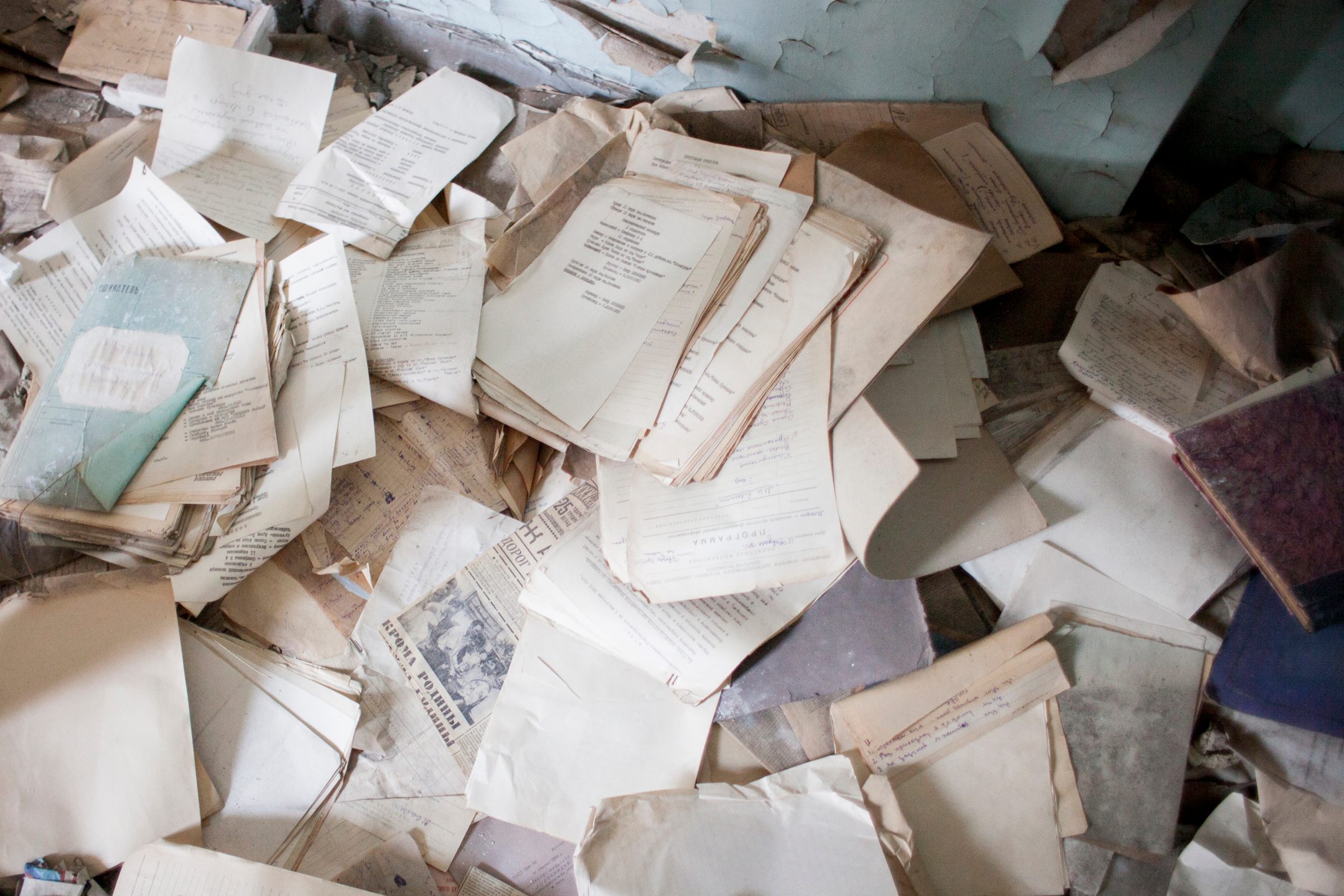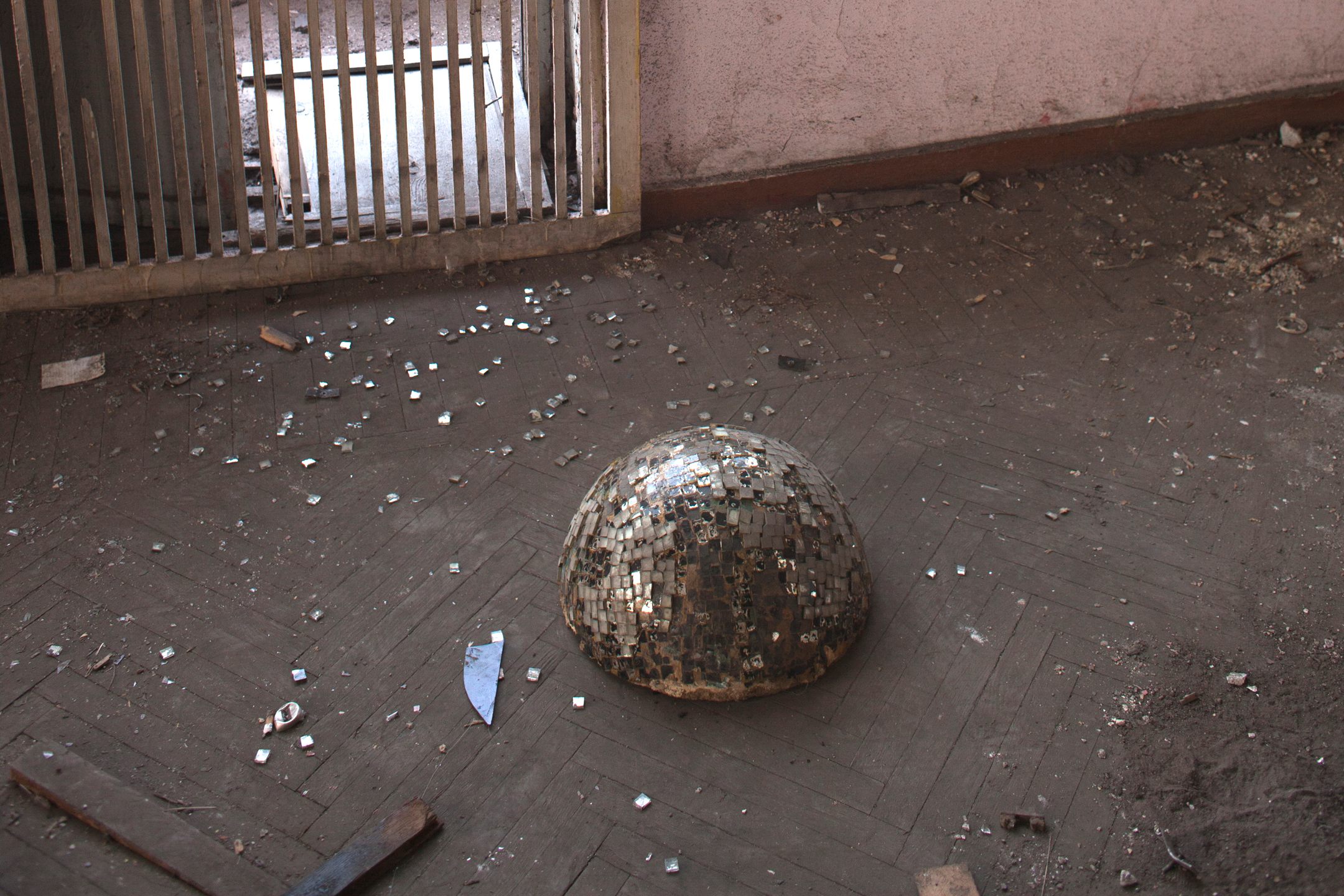Inside the Abandoned Ruins of a Ukrainian ‘Palace of Culture’
Built in 1932, the massive building is now in ruins.
A statue of workers inside the Palace of Culture Ilyich, Дворец культуры Ильича. (All Photos: Lucas Vogt)
This monumental symbol of proletarian culture has fallen into disrepair in Ukraine’s third largest city, Dnipropetrovsk, a city currently distancing itself from its Soviet past.
The Palace of Ilyich opened its doors in 1932 and functioned as the cultural heart of Dnipropetrovsk until the collapse of the Soviet Union. In the 1990s, the building was privatized, and its valuable belongings were liquidated. Finally, in 2000, it was locked up and left to deteriorate.
These days the only visitors it attracts are scrap metal scavengers or urban explorers.

The exterior of Палац Ілліча, the Palace of Ilyich.
Architect Alexander Krasnoselskiy’s design of the building was heavily influenced by constructivism, a style associated with Communist aesthetics of the 1920s and early 1930s. The massive complex comes equipped with several halls for concerts, sports, theater productions, and over 20 children’s classrooms.
Hundreds of workers and their families would gather at the palace to pursue hobbies, to celebrate holidays, or simply for entertainment. The youngest were enrolled as Little Octobrists and would later join the Young Pioneers, an organization similar to Scouts but with a socialist twist.
Every town, kolkhoz (collective farm), and sovkhoz (state-owned farm) in the Soviet Union was equipped with a Palace of Culture—one centralized hub accommodating an impressive variety of government-endorsed leisure activities. Soviet ideology declared religion a scam, accusing it of luring society’s most vulnerable citizens into addictive and deceptive mind tricks. It could be argued that the Palace of Culture concept was devised as a replacement for the moral guidance and sense of community which the church had provided.

A statue of Lenin in the ruins of the building’s library.
As a result of the Euromaidan protests in 2013, the dramatic ousting of president Viktor Yanukovych in 2014, and the ongoing war with Russia, the majority of Ukrainians have grown ever more eager to move on from their Soviet past. Last year the government outlawed Soviet symbols and support for Communism. This led to a wave of nation-wide de-Communization, with more than 1,000 Lenin monuments torn down since 2013. In fact, only a few months ago, the city of Dnipropetrovsk changed its name to Dnipro, since its namesake Petrovsky was a commie.
Meanwhile, the cost of renovating the ruined Palace of Culture in the middle of Dnipro is estimated at $20 million, but even without the initial financial hurdle, a reluctance toward resurrecting the Soviet hub is understandable amid the current political climate. However, there are no immediate plans to raze it to the ground either, and most citizens would still prefer to see the building back in use.
There are two guards situated in a room to the left of the entrance, close to the Metrobudivnykiv metro station. For those interested in visiting the palace, try knocking on their window and befriending them, perhaps with a small gift. If you’re lucky they’ll give you a tour and maybe even present the Soviet memorabilia they’ve collected from the building.
Another way to get in is to attend one of the cultural events that occasionally take place in the palace, like the annual new media art festival Construction Fest. Or just sneak in.

The entrance to the theater.

Inside the theater.

What remains of the stage.

Theater props bearing Soviet symbols.

The staircase.

A vandalized Lenin statue in a corridor.

Inside the library.

An old poster in the library.

Torn remnants of books.

Curtains still hang from some of the library windows.

The main concert hall.

The fallen chandelier in the main concert hall.

A decayed mirror ball.

The exterior.














Follow us on Twitter to get the latest on the world's hidden wonders.
Like us on Facebook to get the latest on the world's hidden wonders.
Follow us on Twitter Like us on Facebook